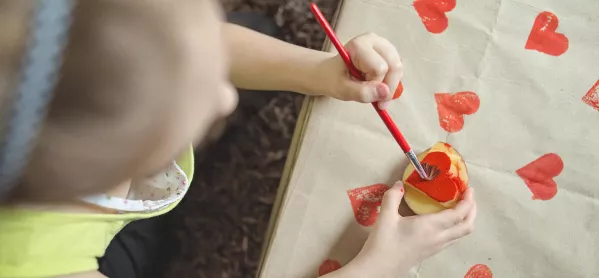- Home
- Teaching & Learning
- General
- 10 easy tips for left-handed learners
10 easy tips for left-handed learners

Over the years I have had a wealth of CPD but sometimes I learn the most when I’m least expecting to - which is exactly what happened one rainy day last month.
I was sitting with colleagues, chatting at the end of a staff meeting, when one commented that the book she was using was incredibly difficult for left-handers to write in.
This caused the right-handed people to start asking questions. Why was it difficult? What else do left-handed teachers find hard?
Answers such as marking the registers, using a ruler, marking the multiplication squares and many more were given. This made us think: if it is hard for left-handed teachers, what must it be like for left-handed children?
So, I took to Twitter to ask fellow teachers what they do to support their left-handed children.
How teachers can help left-handed pupils
The response was overwhelming, with all kinds of practical, useful suggestions. I’ve picked the top 10 tips from those responses.
1. Make sure that left-handed children sit on the left-hand side so they are not elbow-clashing with anyone. This also needs to be considered in the dining hall so that children are not clashing elbows when eating.
2. Teach left-handed children to rotate their paper/books 45 degrees clockwise. If they do this, they will be able to see what they’re writing. Similarly, learning to write on a sloped surface can really help them, as it makes it easier to see their handwriting.
3. Help them to hold their pen correctly - the pincer grip seems to be the best for left-handed children. In order to do this, they need to have a firm thumb, index finger, middle finger grip. Make sure they don’t hold their pen too low down - if they do, they won’t be able to see their writing.
4. Teach them to write with a straight wrist and to keep their writing-hand below the line they are writing on.
5. Accept that pens are a real issue for left-handed children and don’t assume that they will be able to write with the same pens their right-handed peers can use. Ink smudging, scratching paper and pens not working are the many issues left-handers face when using the school handwriting pens.
One tweeter finds that her left-handed children write best when they choose the pen they write with and another (a headteacher) buys Lamy pens for all his children, as they have a left-handed nib option.
6. Consider placement of resources for your left-handers. Make sure that multiplication grids have the numbers on the right-hand side and that spellings and other resources are also put into the right-hand side of their book.
Some schools have created spiral-bound books with the spirals on the right-hand side, so that they don’t get in the way when the children are writing.
7. Standard rulers are challenging for many left-handers. On the other hand, rulers scaled from right to left for drawing lines in the natural direction make it easy to draw and measure lines - they are not terribly expensive but appear to make a significant difference.
8. In ICT, doing something as simple as moving the mouse to the left-hand side will really help. If you want to go one step further, go into settings and switch the mouse buttons around.
9. To benefit all children, make sure that they practise skills with both the left and right-hand side of their body in PE. This does mean that you need to model throwing, catching, kicking and so on with both your left and right sides, but it will benefit all children so much.
Similarly, in music, get all children to play instruments with both hands and not just their dominant one. Playing clapping games or passing games using the non-dominant hand can really help.
10. Help your left-handers to know that being left-handed is a wonderful thing and that many well-known people are also left-handed. Many left-handed children have low self-esteem because from an early stage they have found actions that others have found simple very challenging.
You could do activities for the whole class where everyone tries using their “other hand” in order to celebrate “handedness”.
If you want to read more of the responses that inspired the above list then you can read whole Twitter thread that inspired these ideas on my Twitter feed.
Toria Bono is a teacher in South-East England
topics in this article



